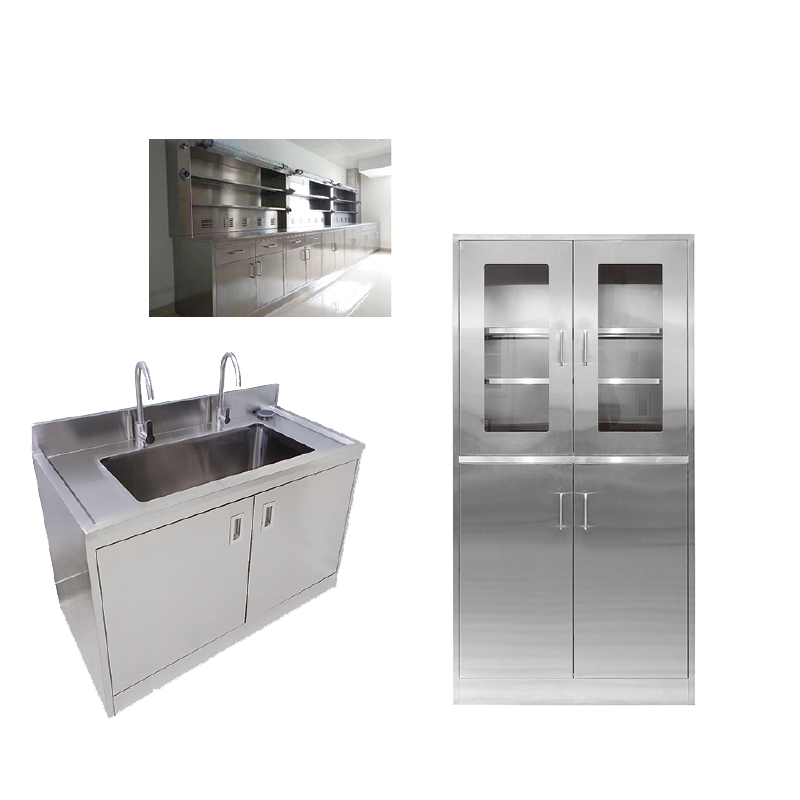When it comes to outfitting your laboratory with durable and reliable furniture, steel is often the material of choice. However, not all steel is created equal. In this article, we will explore the differences between cold rolled steel and stainless steel lab furniture, helping you make an informed decision for your lab’s needs.
Table of Contents
Features of Cold Rolled Steel and Stainless Steel
Cold Rolled Steel:
Strength and Durability: Cold rolled steel is known for its high tensile strength and toughness. The rolling process at room temperature enhances its structural integrity, making it ideal for heavy duty applications.
Smooth Surface Finish: The rolling process also results in a smooth, polished finish that is aesthetically pleasing and easy to clean.
Versatility: It can be easily molded and formed into various shapes, making it suitable for custom lab furniture designs.
Cost Effective: Generally, cold rolled steel is less expensive than stainless steel, making it a budget friendly option for many laboratories.
Stainless Steel:
Corrosion Resistance: Stainless steel contains chromium, which forms a passive layer of chromium oxide on the surface, preventing rust and corrosion. This makes it perfect for environments exposed to moisture and harsh chemicals.
Hygienic Properties: The nonporous surface of stainless steel is easy to clean and sterilize, making it ideal for laboratories where hygiene is critical.
Aesthetic Appeal: Stainless steel has a sleek, modern look that can enhance the overall appearance of your lab.
Longevity: Due to its corrosion resistant properties, stainless steel lab furniture typically has a longer lifespan than cold rolled steel furniture.
Applications in Different Types of Laboratories
Cold Rolled Steel:
Industrial Laboratories: Ideal for heavy duty applications where high strength is required.
Educational Institutions: Cost effective and durable, making it suitable for schools and universities.
General Research Labs: Versatile and customizable to fit various research needs.
Stainless Steel:
Pharmaceutical Labs: Exceptional hygiene and corrosion resistance are crucial for drug development and testing.
Food and Beverage Labs: Easy to clean and sterilize, ensuring compliance with strict hygiene standards.
Chemical Labs: Resistant to corrosive substances, making it perfect for handling chemicals.
Cost
When considering the cost, cold rolled steel lab furniture is typically more affordable than stainless steel. While the initial investment in stainless steel lab furniture might be higher, its longterm benefits and durability can outweigh the costs over time, especially in environments where corrosion and hygiene are major concerns.
Lifespan of Cold Rolled Steel vs. Stainless Steel Lab Furniture
Cold rolled steel lab furniture, when properly maintained, can last for several years. However, in environments prone to moisture or corrosive chemicals, its lifespan might be shorter compared to stainless steel. Stainless steel lab furniture, due to its corrosion resistant properties, often lasts much longer and requires less maintenance, making it a long-term investment.
Which Type of Laboratory Should Use Stainless Steel Lab Furniture?
Stainless steel lab furniture is best suited for laboratories where hygiene, corrosion resistance, and easy maintenance are paramount. This includes:
Pharmaceutical and biotech labs
Food and beverage testing labs
Chemical and petrochemical labs
Medical and clinical research labs
Which Parts of Lab Furniture Will Use Cold Rolled Steel?
Cold rolled steel is commonly used in parts of lab furniture that require high strength and structural integrity but are less exposed to corrosive substances. This includes:
The frame of the laboratory workbenches and tables.
Shelving units.
Frame structures for modular lab furniture.
For some steel lab furniture, part of them is steel , some of them is the whole steel. such as the steel cabinet.But for stainless steel lab furniture, most of the case is the whole stainless steel.
Why Pre-Powder Coating Process Is Important To Ensure The Cold Rolled Steel Lab Furniture’s Quality?
Before powder coating, the cold rolled steel must undergo several preparation processes to ensure the coating adheres properly and provides maximum protection. These steps include:
- Cleaning: Removes contaminants.
- Surface Preparation: Mechanical (sandblasting/shot blasting) or chemical (acid pickling/phosphating) methods create a suitable surface for coating.
- Rinsing: Cleans off any residual chemicals or abrasives.
- Drying: Ensures no moisture is present.
- Pre-Heating (Optional): Enhances adhesion and flow of the powder coat.
By following these steps, you can ensure that the cold rolled steel is properly prepared for the powder coating process, resulting in a durable, long-lasting finish that enhances both the performance and appearance of the steel lab furniture. While the stainless steel lab furniture don’t need these process to ensure the quality.
Which Material Is The Best?
The best material for lab furniture ultimately depends on the specific requirements of the laboratory:
- For High Corrosion Resistance and Hygiene: Stainless steel is the superior choice. Its long-term durability and low maintenance needs make it ideal for labs that deal with moisture, chemicals, and stringent hygiene standards.
- For Cost-Effectiveness and Strength: Cold rolled steel is a practical option. It offers excellent strength and durability at a lower cost, making it suitable for a wide range of general lab applications.
By considering the unique needs and constraints of your laboratory, you can choose the material that provides the best balance of performance, durability, and cost-effectiveness.
Conclusion
By understanding the features, applications, and maintenance requirements of each material, you can make an informed decision that ensures your lab is equipped with the best furniture for your needs.




